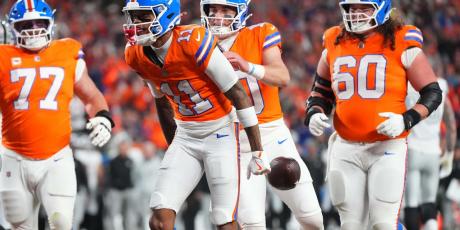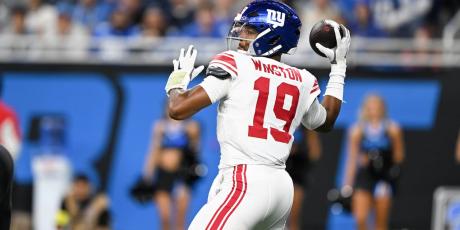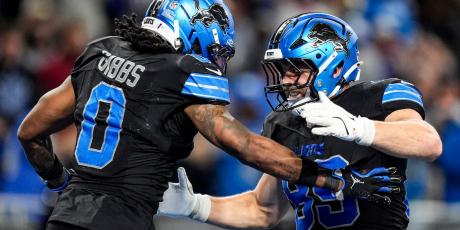IDP Draft Strategy: The Definitive 2019 Guide

There are few days in a fantasy football season that are as important as your draft, and when playing in IDP leagues it is no different. With an expanded player pool and more roster spots to fill it can seem overwhelming, but at its core it is still about finding value during the draft, and an astute IDP gamer can really separate themselves from their league mates in this regard when it comes it roster building.
Scoring System
Above all else, the most important aspect of IDP draft strategy, and in fact all draft strategies, is having a good grasp of your league’s scoring system and what it means for player values.
Fantasy gamers are all very aware of how PPR or non-PPR scoring has a major impact on possession receivers and pass-catching backs, yet often they overlook tackle-to-interception and sack-scoring ratios for the defensive player scoring settings. An IDP scoring system is deemed to be ‘tackle-heavy’ if the value of big plays to tackles is 3-to-1 or less, and big-play heavy if 5-to-1 or more (4-to-1 is considered balanced).
In a tackle-heavy scoring system the in-the-box-safeties see spikes in their values as do Tampa-2 coverage corners asked to support the run. This also holds true for 3-4 defensive ends and three-down middle linebackers who tend to accrue more tackles than their positional counterparts. Flipping over to big-play heavy systems it is the top 4-3 defensive ends that see a surge in value as there tends to be separation between their point tallies and their positional counterparts. Playmaking defensive backs, particularly ball-hawking corners, also jump up rankings over the course of a 16-game season although they still suffer from inconsistent scoring from week to week. Productive pass-rush outside linebackers also benefit greatly in big-play leagues and get upgraded from matchup based plays to boom-or-bust LB2/3 prospects.
Positional Value
The next thing to be aware of when drafting is that not all positions are created equal. A case in point would be how running backs are not the highest scoring players, but they are valued at a premium and are selected earliest in redraft leagues because of the scarcity of the elite ones who play three-down roles.
Defensive ends are the IDP equivalent of running backs, where the criteria to be considered elite is as follows: play in a 4-3 defense, project to play 65%+ of snaps, have the ability to post both double-digit sacks and break 40 total tackles. Players such as J.J Watt have broken the mold by being a 3-4 end who can post multiple 20-plus sack seasons, but he is an exception to the rule and has redefined expectations for 3-4 ends around the league. It should, however, be added that some top 3-4 ends can be considered solid DE2s because they can post 50+ total tackles as well as moderate sack numbers which offers consistency in scoring from week to week that few other non-elite defensive ends can. This higher tackle floor makes them safer selections than similarly ranked 4-3 ends.
Linebackers are the workhorses of any solid fantasy team. They’ll be the most reliable scorers each week, making them vital to your team’s success. The key is to focus almost exclusively on inside or middle linebackers as your starters, or in some cases the weakside OLB (WLB). If you have similar values on an edge-rusher and a less flashy ILB/MLB or WLB alternative, side with the more predictable tackle points over the big play volatility the sack-artist provides. This tactic should be toned down a little in big-play leagues or more balanced scoring systems, but I’d still prefer a Zach Brown or Joe Schobert to Von Miller or T.J. Watt. There can be some strategic value however picking up a top pass-rushing OLB as a primary option on your bench. They can be utilized as a match-up based alternative when facing a favorable on-field matchup, or when facing a superior scoring team and you need to take a boom-or-bust scoring approach.
At defensive back, it is the run stuffers who are the most highly prized players, even in big-play scoring leagues. Being able to consistently produce high-tackle numbers year after year makes them dependable and desirable, whereas roaming free safeties are reliant on making turnovers and cover cornerbacks need to be targeted regularly to provide any scoring consistency. Look to target players known to be in-the-box style safeties or those who play opposite true deep-field options such Earl Thomas.
Defensive backs that blitz often can also have elite fantasy values, as shown historically by the likes of Charles Woodson and more recently by the exceptional rookie Derwin James. While this has become less of a trend of late for safeties, we have seen an emergence of aggressive slot corners, typified in recent seasons by the likes of Tyrann Mathieu and Corey Graham, who have both been highly effective for fantasy purposes when employed in a such a role. As the NFL continues to evolve to high octane pass-first league, this is a trend to monitor as defenses begin to roll out more and more nickel packages (five defensive backs on the field).
Build a Draft Board

- All Premium Content
- The most Accurate Rankings Since 2010
- Expert Draft Picks w/DraftHero
- Highest Scoring Lineup + Top Available Players w/LeagueSync
- ...and much much more






















